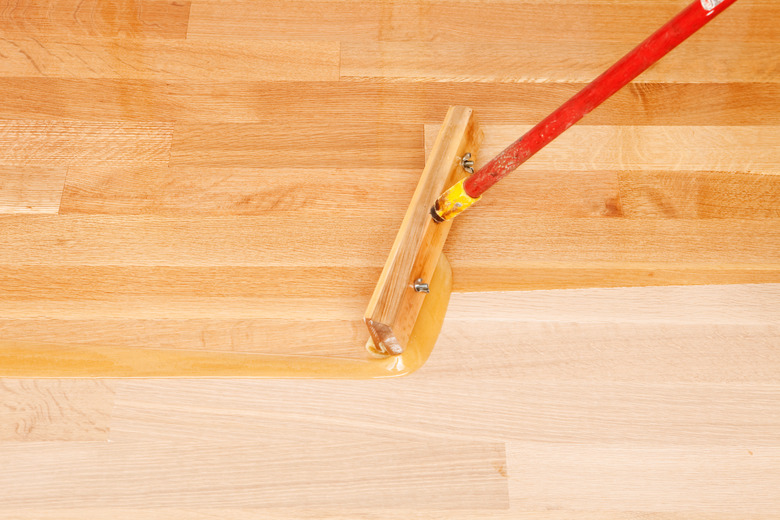How To Get A Matte Finish With Polyurethane
The main purpose of polyurethane varnish or any wood finish is to protect and preserve the wood. If the finish adds gloss and luster, that's a bonus for some people but not necessarily for everyone. Some craftspeople prefer the look of natural, unfinished wood.
If you're one who prefers a matte wood finish, the easiest way to achieve it is to use a matte polyurethane, and that will almost certainly be a water-based product. The problems with water-based polyurethane are that it doesn't level out as smoothly as an oil-based finish, and it doesn't protect as well against the elements. If you're committed to an oil-based finish, hand rubbing with polish or wipe-on varnish is probably the most effective way to cut the sheen.
Topcoat with No-Shine Polyurethane
Topcoat with No-Shine Polyurethane
On the shelf at the paint store, you'll find products that run the gamut from full gloss to semi gloss to satin to matte. They are all water-based products, differing only in the amount of flattening additive they contain. If you're finishing a countertop, furniture for your boat or some other woodwork that needs the protection of oil-based spar polyurethane, you can't easily find matte formulations.
One way to handle this is to apply all the coats of oil-based polyurethane the woodwork needs, let the oil-based product dry and apply a single top coat of a water-based product with a satin or matte sheen. You can find such a product in a spray can, and spraying is the best way to apply it. After you've scuffed the oil finish, a single coat of the water-based product is all you need. Let it dry, and you're done.
Hand Rub With Wipe-On Varnish or Oil
Hand Rub With Wipe-On Varnish or Oil
Polyurethane isn't exactly the most sophisticated wood finish, and it doesn't rub out as well as lacquer or shellac. If you want to transform the sheen from high gloss to satin or matte, then using a hardening oil such as tung oil is a good way to do it.
- Apply a base coat of gloss water- or oil-based polyurethane, let it dry and scuff it with 220-grit wet/dry sandpaper. Apply a second coat. You can rub out this coat, or you can scuff it and apply a third coat depending on the quality of finish you're after.
- Scuff the finish with 400-grit or finer wet/dry sandpaper. Lubricate the paper with a little water to help it cut the finish more smoothly.
- Pour a small amount of tung oil, boiled linseed oil or teak oil onto a soft cotton cloth. Rub the oil into the finish, going with the grain of the wood.
- Keep rubbing until only a small amount of the oil is left on the wood. Let that dry overnight and then rub again with a clean cloth or lambswool buffer.
Rub Down the Finish With Wax or Furniture Polish
Rub Down the Finish With Wax or Furniture Polish
You can use matte polish for wood, floor wax or even a product designed for automotive use to flatten a polyurethane finish. If you want a higher-quality finish, scuff first with 400-grit or finer sandpaper, but it isn't necessary. The wax or polish will replace the plastic-looking gloss with a more lustrous satin or matte sheen.
- Allow the top coat of finish to cure for at least 24 hours before rubbing it out.
- Spread polish onto the surface with a soft cotton rag. If you use wax, the best way to apply it is with a wad of very fine steel wool. Stroke with the grain using moderate pressure to cut down bumps and imperfections in the finish.
- Rub the wax or polish with a clean cloth or use an electric buffer with a lambswool buffing cloth.
